Thistles are a group of plants that belong to the vast daisy family Asteraceae. They are characterized by prickly stems and leaves with a rounded head of purple flowers.
Of the hundreds of nectar producing thistle species only a small number grow in close enough profusion to produce single flower honey. Ironically, of these, some are classified as weeds and are targeted for eradication in many countries—making some single flower varieties of this honey harder to find. Yet delicious even when combined with one or two other species blossoming at the same time, for a particularly unique two or three flower honey.
Thistles contribute to honey from around the world, but single flower Thistle honey is most often found in Italy, North America, Argentina and Australia. Thistle honeys primarily come from nectar of Carduus, Cirsium, and Centaurea species. And not forgetting Galactites tomentosa, the source of Mediterranean Thistle honeys.
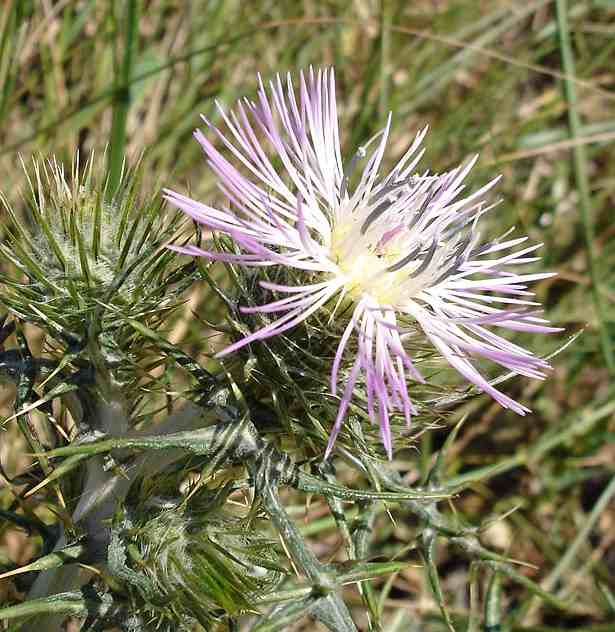
|
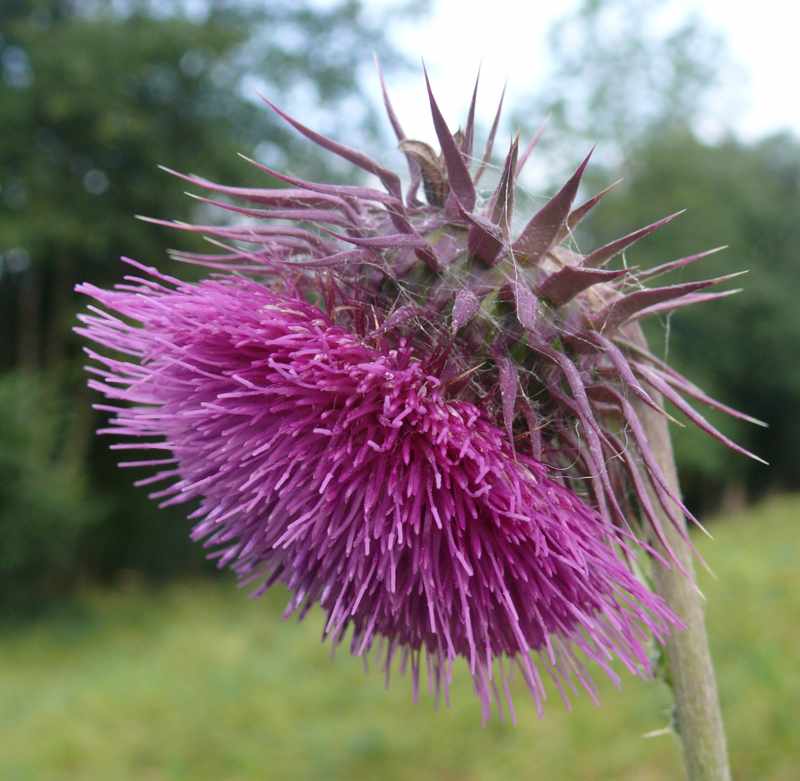
|
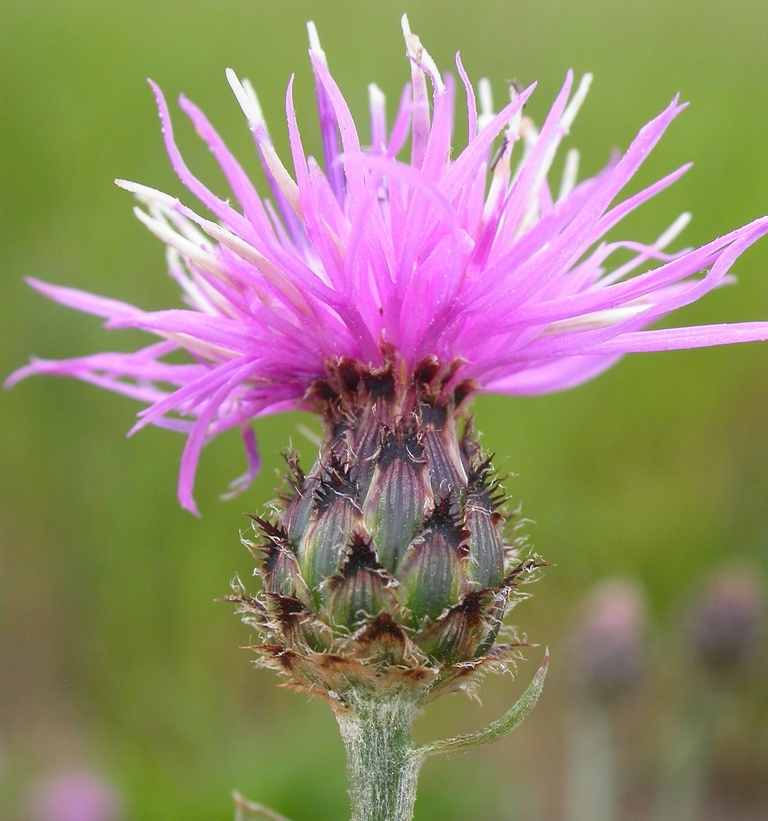
|
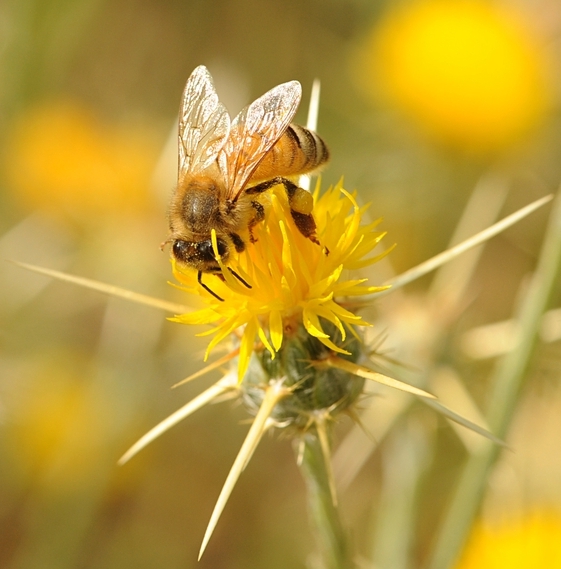
|
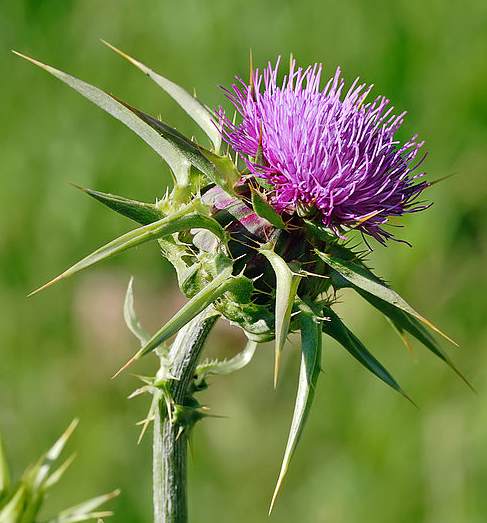
|
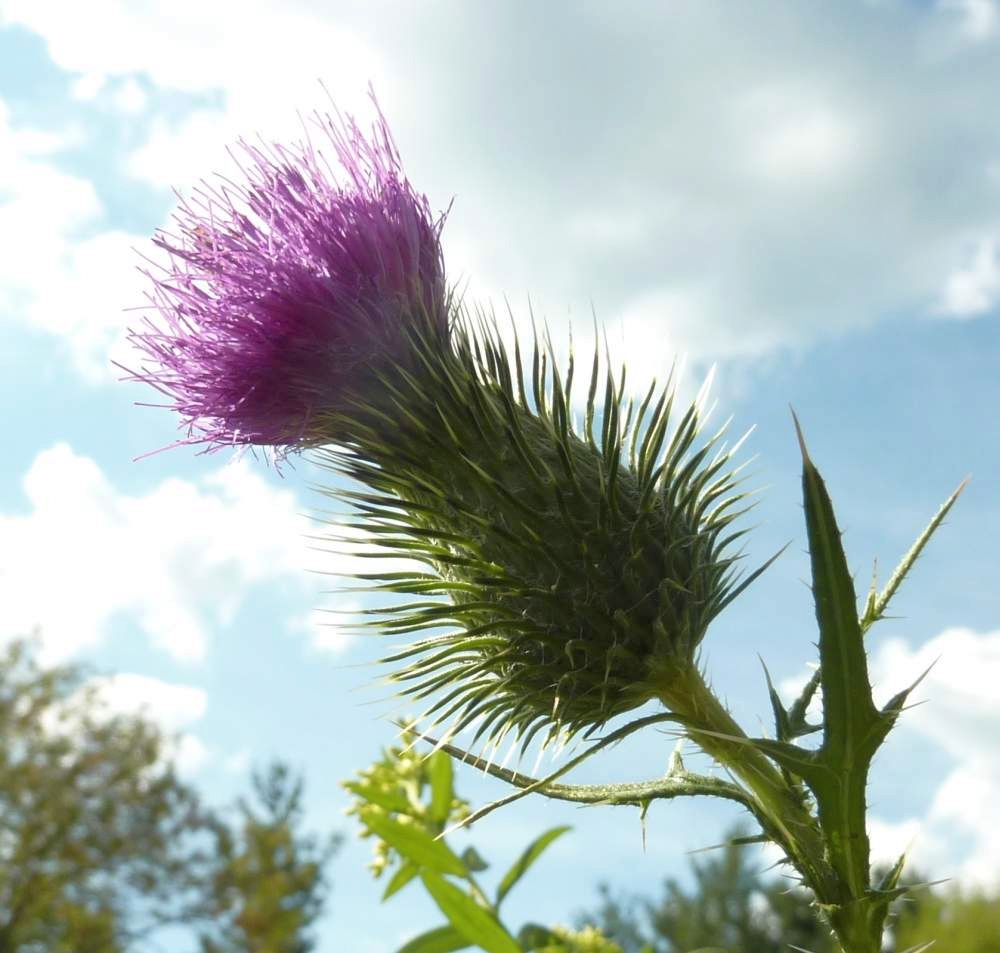
|
Translations:French: Miel de chardon; Italian: Miele di cardo; Spanish: Cardo miel or Miel del cardillo ; German: Distel honig; Arabic: العسل الشوك
Thistles have been mentioned in historic and literary texts for thousands of years. From Pliny’s The Natural History, on thistles to Aseop’s Fables: The Ass Eating Thistles.
The thistle is the national symbol of Scotland. It holds a special place in Scottish history where it represents a prickly mix of pride and defensiveness. Legend has it that a Norse army, intent on invading, removed their shoes to sneak up on the sleeping Scots. But when one of the Norseman stepped on a spiny defender, his agonized yell alerted the Scots’ army of the danger, who naturally went on to win the day!
Thistle seeds are spread and carried aloft by the wind as thistle-down and are a favorite food of the Goldfinch and other small birds.
Thistles are used as food including the well known artichoke and cardoon, but also Milk Thistle and many more.
Therapeutic uses are traced back to medieval times. Both the Blessed Thistle and Milk Thistle were used for nursing mothers, tonic, stimulant, diaphoretic, emetic and emmenagogu. Today thistles are used in homeopathy and for liver problems. See other herbal and therapeutic uses of thistles.
![]()
Italian Thistle Honey or Cardoon Honey – Miele de Cardo
In Italy, Thistle honey, called Miele de Cardo or Cardu pintu, and in English also known as Cardoon honey, is produced mainly in Sicily and Sardinia, and to a lesser extent, in Calabria and the island of Elba. Usually the product of several thistle species, it might be more aptly named “Thistles Honey”. It is mainly composed of the nectar of Holy Thistle Galacites Tomentosa, but also other thistles of the Carduss and Cirsium species (also Carlina, Sylibum) and wild herbaceous plants, which bloom between May and July from uncultivated plains.
Thistle honey ranges from light amber to amber with orange hues and often green fluorescence when liquid, and from light beige to dark beige with yellow or orange hue, when crystallized. It has a medium intensity aroma which begins with a fruit, flora scent that then becomes animal and intense. Words that describe the aroma: floral, fruity-floral, animal, chrysanthemums, yellow daisies, flowery perfume, and peat. The taste is medium sweet and slightly sour and bitter. Some words or expressions used to describe the taste / aroma: floral-fruity beginning, fresh vegetable, then animal, fish meal, caramel, spice. It has an average persistence in the mouth. It crystallizes spontaneously several months after harvest.
Although the name, “Cardoon” refers in general to Thistle honey from any of a variety of Thistle species, it may also refer to a Thistle honey primarily from the Cardoon or artichoke thistle (Cynara cardunculus). It is quite a rarity, mainly coming from relatively scarce wild versions, as the plentiful cultivated versions used for the vegetable, are cut too soon for nectar collection by bees. Cultivated Cardoon may be a source of nectar when grown for seed.
Cardoon or Thistle honey from Sardinia has been recognized by the Slow Foods Ark of Taste as a unique, small production product worthy of recognition and distinction.
Food matching: Serve with with full-flavored, mature cheeses, or with pecorino and blue cheeses. In Sardinia, it is enjoyed with sebadas, traditional fried pastries filled with pecorino cheese.
References, other resources
Galactites tomentosa species
Artichoke & Cardoon History and Uses
Nodding Thistle Honey – Carduus Nutans
Nodding Thistle (Musk Thistle) Carduss nutans, is a Eurasian native that has spread to North America and other countries. Nodding Thistle honey is available in New Zealand where grows in profusion, blossoming in late summer. Its name is derived from the musky smell of the flower. Unfortunately, it is usually considered a weed, its sharp spines cannot be tolerated by livestock. This can also lead to severe degradation of native grasslands and meadows. Grazing animals will eat native vegetation giving the thistles a competitive advantage. And while its honey is prized by beekeepers, farmers are fighting and slowly turning this invasive species back. Finding it will become more difficult in time. Due to its low pollen count it cannot be identified as a single flower honey by pollen, but rather by other indicators such as color. It has a delicate floral smell, light, clean taste and light amber color. Crystallization is slow.
Nodding Thistle honey may be characterized by the presence of a series of linalool derivatives that may be used as a unique identifier of this honey. The odor components of linalool are sweet, floral, lavender, refreshing, citrus, orange, clean. Other odors: Flowery, fresh
Translations: Russian: Будяковый мед;
References and other resources
Extractives from New Zealand honeys. 4. Linalool derivatives and other components from nodding thistle (Carduus nutans) honey
Floral Markers in Honey of Various Botanical and Geographic Origins: A Review
Nodding Thistle carduus nutans
Image Credit: By Bernd Haynold (selbst fotografiert – own picture) [GFDL or CC-BY-SA-3.0-2.5-2.0-1.0], via Wikimedia Commons
Canada Thistle Honey – Cirsium arvense
Although commonly known as Canada Thistle (Cirsium arvense) in the US and Canada, it originated in Eurasia where its English name is Creeping Thistle. It blossoms between May and October with longer seasons in the North.
It is a very fragrant and strong nectar producer loved by bees and insects, but it is a serious problem for North American farmers. Interestingly, it was believed to have been spread from the north by the railroads, the soft downy seeds blown by the swiftly moving cars. Canada Thistle honey may be found in Canada and the US but is rare and often mixed with other nectar of other plants. It produces a very fine quality light honey comparable to clover honey.
Translations: French: Miel Cirse des champs or Miel Chardon du Canada; Italian: Miele di Cardo campestre; German: Acker-kratzdistel honig; Spanish: Cardo negro
References and other resources
Cirsium Arvense
Other Thistle Honeys
![]() Notably good nectar producing thistles that contribute to summer multiflower honeys and occasionally may produce single flower honey.
Notably good nectar producing thistles that contribute to summer multiflower honeys and occasionally may produce single flower honey.
– Carline thistle Carlina vulgaris L.
– Common thistle Cirsium vulgare
– Syrian Thistle Notobasis syriaca
– Pricked sow thistle Sonchus asper, Sow thistle Sonchus oleraceus
– False carline thistle Carduus carlinoides Gouan, Curled thistle Carduus crispus L.
– Great globe thistle Echinops sphaerocephalus L.


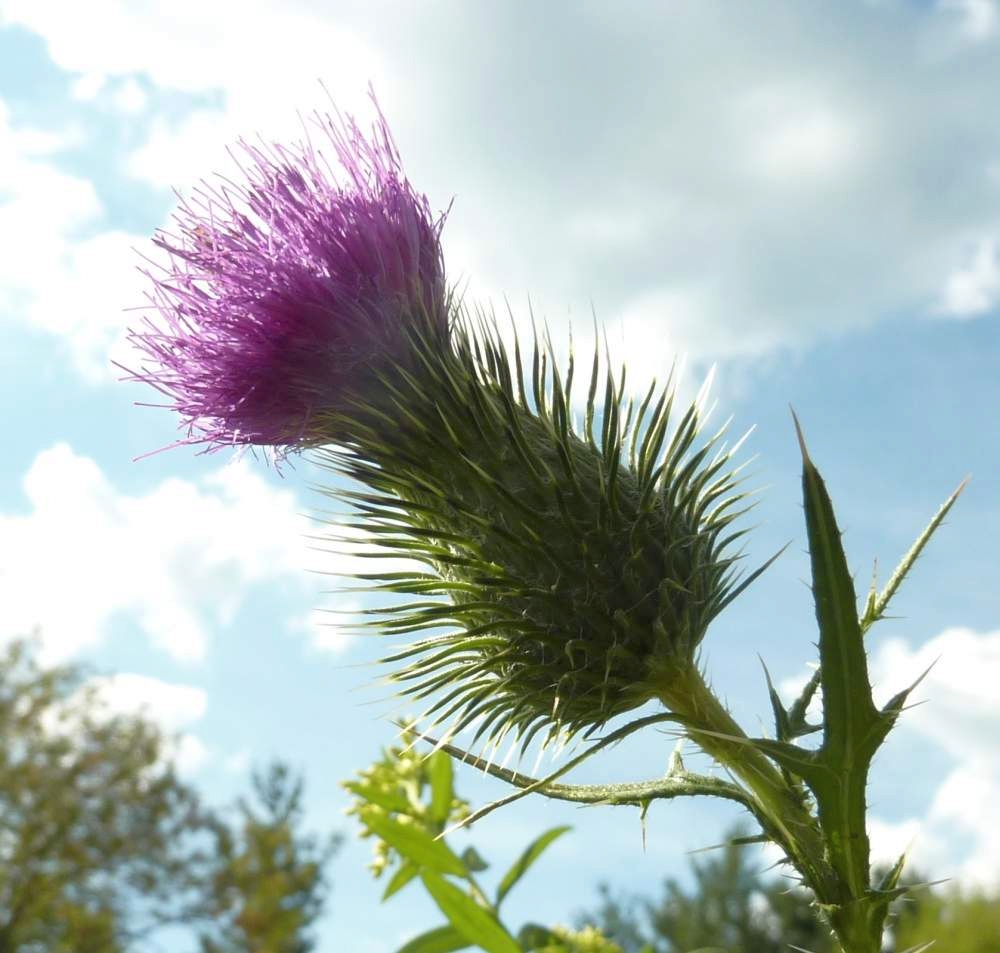

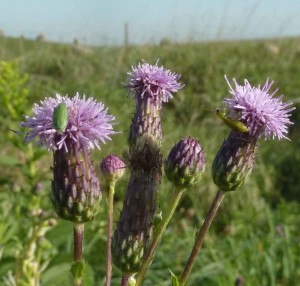
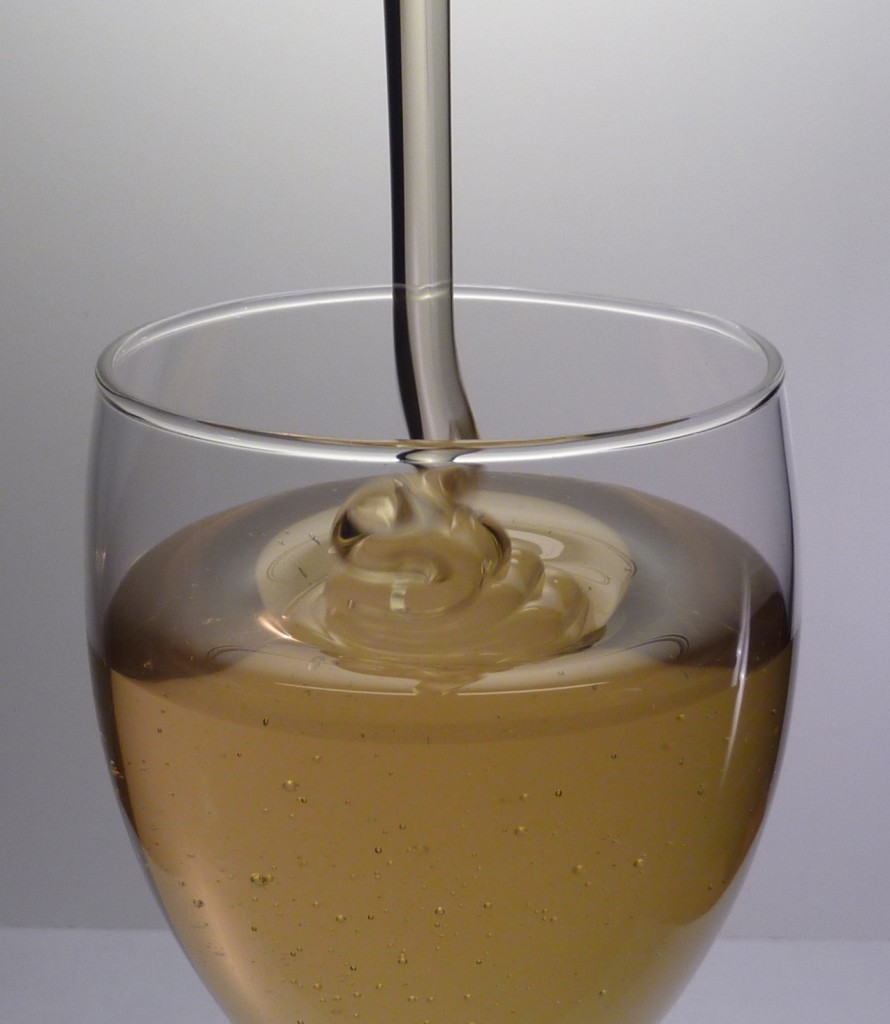
fantastic love this site!
In sardinia is very diffused
https://www.terrantiga.org/prodotto/miele-biologico-di-cardo-di-sardegna/
I have been leaving my bull thistle to grow for the nectar during the dearth period in my region of BC- vancouver island. lots of bees on it right now. thanks for the article.